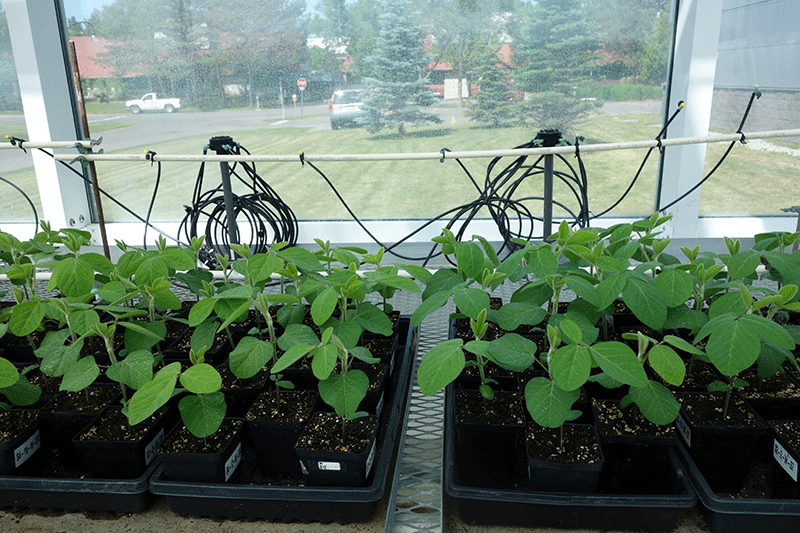Harnessing the power of nature
BENEFICIAL BACTERIA BOOSTS SOYBEAN YIELDS
PLATEAUING SOYBEAN YIELDS are spurring research to find new ways to boost more bushels out of each acre. Researchers at Trent University are trying their hand at increasing soybean yields using beneficial bacteria to enhance plant growth. Still in the early stages, this bacterial research is targeting key plant development stages with natural growth hormones to enhance a soybean plant’s health, quality, and strength and increase seed size and pod numbers.

“By testing and using carefully selected strains of bacteria, we’ve found a natural soybean growth enhancer that, with targeted application, can produce plant growth hormones that act as a nutrient vacuum, stimulating transport of metabolite building blocks to specific areas of a plant,” says Dr. Anna Kisiala, member of the research team.
The research, funded in part by Grain Farmers of Ontario, is centered around cytokinins (CKs) — a vital group of plant growth hormones produced by the bacteria, Methylobacterium. Soybeans naturally produce these growth hormones and the research team believes boosting these key hormonal levels could lead to potential enhancements of soybean plant growth and development. Led by Dr. Neil Emery, vice president, research, and professor of biology with Trent University, the team has been testing and screening strains of the desired bacteria for exceptionally high CK growth hormone production and have been examining plant application methods to maximize these growth enhancements.
HOW IT WORKS
In low amounts, growth hormones control a plant’s metabolism and control the overall development, or cell divisions, within a plant. By increasing the rate of CK growth hormones, delivered through the beneficial bacteria, and targeting application at specific growth stages, the research team expects more plant nutrients will be transported to those areas in need, improving processes like pod setting or seed development. The anticipated result will deliver increased soybean pod and seed size, leading to higher yields.
In 2014, research was conducted in a greenhouse, followed by field trials in 2015, to help determine the most effective way of delivering the beneficial bacteria to plants. Three methods of bacterial delivery were tested at key plant growth stages — soaking the seeds in a pre-plant seed inoculation, soil watering after planting, and spraying at the early seed setting. “Higher levels of the growth hormones, CKs, were found in plants inoculated with the bacteria,” explains Kisiala. “Those plants with higher levels of CKs also showed elevated growth rates and more effective photosynthesis, a vital part of plant growth and nutrient allocation that can lead to better plant quality and health.”
In-field trial results from the 2015 growing season are still being evaluated. Preliminary results are pointing to a significant potential for greater soybean yields and enhanced overall crop quality as a result of applying the beneficial bacteria, Methylobacterium, and the growth hormones produced from this bacterial species.
“While increasing soybean yield is our goal, the application of these naturally occurring growth hormones will do more,” says Kisiala. “Healthier, stronger plants will develop more evenly and won’t be as reliant on soil and weather conditions and they will be more resilient, especially in less than ideal growing conditions where naturally occurring CK levels are lower.”
WHAT’S NEXT
While the results of the 2015 field tests are still being evaluated, the research team has good reason to believe that the application of beneficial bacteria will result in increased growth hormone levels in plants and become a new tool for farmers as an environmentally friendly soybean growth enhancer.
While more in-field research would be valuable to the project, the team is already talking about commercializing the bacterial strain. “This research demonstrates excellent potential for greater soybean yields and better crop quality — all resulting from applying carefully selected bacteria laden with growth hormones to soybeans when they need it most,” says Kisiala.
This project was funded in part by Grain Farmers of Ontario. •





















